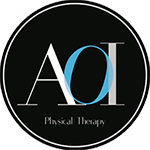Headache Management
Headache, also termed cephalgia, is pain or a feeling of discomfort in the head, scalp or neck region. The cause of headaches varies with lifestyle (eating habits, stress, depression, anxiety and so on).
The various types of headaches are tension-type headache, migraine headache, rebound headache, cluster headache and sinus headache. The occurrence of headaches can be gradual or sudden, lasting from a few hours to several days. Diagnosis of headaches and measurement of response to treatment have been aided by a number of recently developed tools.
The treatment of headaches can be medicinal or non-medicinal.
Non-medicinal treatments are used together with medicinal treatments as part of a combined therapy program.
- Physical Therapy (cervical stabilization exercises, postural correction, manual therapy, dry needling)
All patients will undergoing extensive questioning of the history of their complaints. This helps to guide our therapists in which techniques will benefit the patient the most. This will be followed by an extensive physical examination. Again, this helps to direct our treatment plan. Constant re-evaluation is also performed during and between treatment sessions.
The upper two cervical vertebrae have been proven scientifically to have involvement in headache and migraine activity. Strengthening exercises to improve stability in this area have excellent results, when combined with manual therapy, to restore normal joint biomechanics in the extreme upper neck.
Treatment may consist of hands-on manual physical therapy; dry needling; postural re-education; cervical mechanical traction; myo-fascial release and the development of a customized exercises program to address the patient’s specific needs.
Manual therapy is a specialized form of Physical Therapy, in which therapist use their hands to move joints and soft tissue structures. This manual contact allows the joints, ligaments and muscles to regain their full function. All muscles, ligaments and joints need to move, otherwise they send out pain signals. Therefore restoration of motion helps to ease headache symptoms. In addition, manual therapy has the added benefit of decreasing the volume of signals from the pain receptors. This again, decreases the headaches intensity or takes it away completely. In addition, manual therapy can decrease the frequency of return of headaches and the intensity of the headache.
- Change in lifestyle (diet, trigger avoidance)
Alteration in meal timings and triggering factors (like caffeine and mobile phone signals) are often responsible for migraines. Try to avoid triggers that may bring on a headache by eating regular meals, avoiding alcohol and caffeine, getting plenty of rest and exercising regularly.
- Relaxation (sleep, stress management and meditation)
Changes in sleep patterns, such as disturbed sleep or sleeping longer are some of the confounding factors associated with migraines. Effective stress management, good sleep and meditation has found to improve the conditions of chronic headaches.
- Cryotherapy and Thermotherapy
This is the use of cold and heat to relieve headache symptoms. This type of therapy can provide great relief to patients suffering from chronic headaches.














